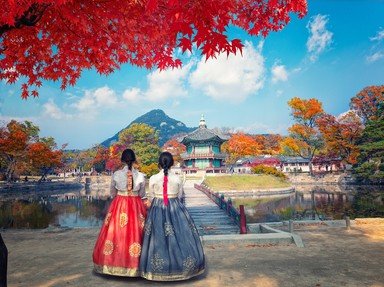Quiz Answer Key and Fun Facts
1. True or false: The Chinese and Korean languages belong to the same language family.
2. True or false: Approximately half of the words in a standard Korean dictionary are of
Chinese origin.
3. Which country, outside of the two Koreas, contains the largest population of ethnic
Koreans?
4. What is the Korean term for the family genealogy?
5. Though the family is the key unit of Korean culture, Korean men during the Koryo period
traditionally sought out alternate forms of entertainment outside of family life. This included seeking out the
company of Geisha-like individuals called what?
6. Which of these practices was most frowned upon in Korean tradition?
7. Which scholar of Korean history of the 16th century coded Confucian principles for
official use by all Korean families?
8. Many traditional Korean homes were equipped with a highly effective heating
mechanism. What was this early home heating system called?
9. Another feature of the traditional Korean home was a room called the Sarangbang. What
was the purpose of a Sarangbang?
10. Which of the following best describes the 'Yangban' of traditional Korean society?
Source: Author
thejazzkickazz
This quiz was reviewed by our editing team before going online.
Any errors found in FunTrivia content are routinely corrected through our feedback system.

